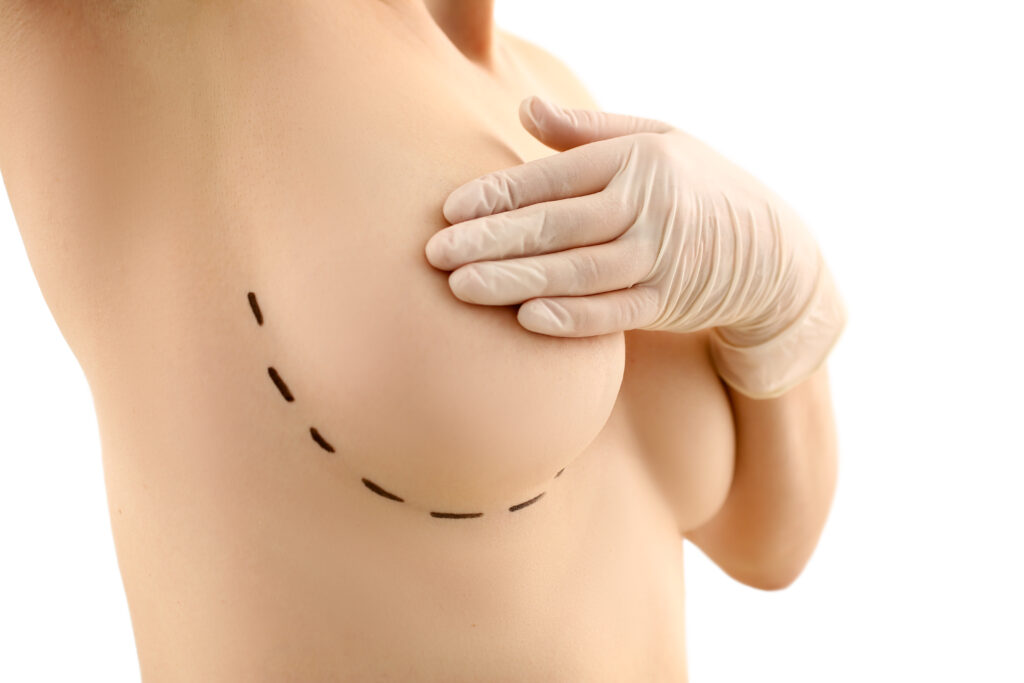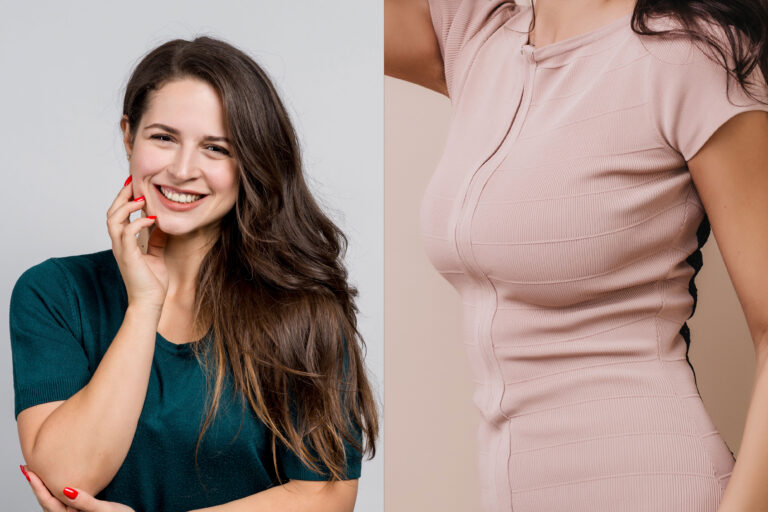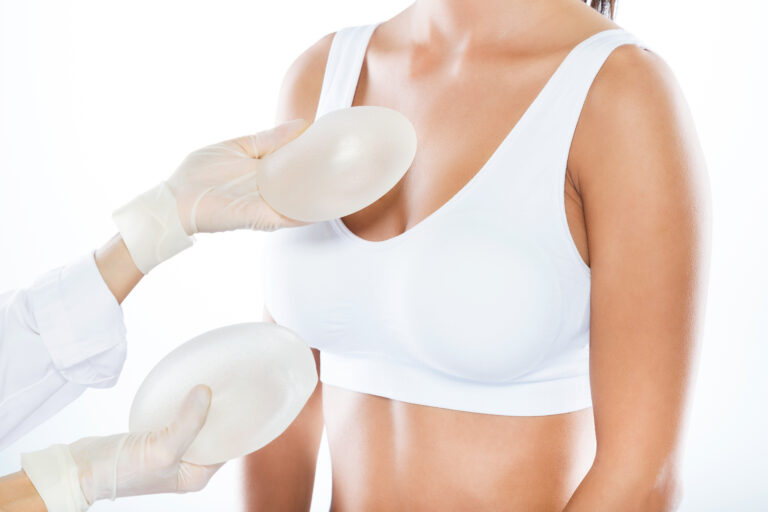A breast lift surgery is targeted at lifting your breasts and making them more youthful again (perky and tight). It is the perfect solution to firmer and youthful breasts and to regain your self confidence.
A Breast Lift Is done when
- The youthful breast contour is lost
- Post pregnancy or breastfeeding sagging
- Your breasts start to look droopy due to weight fluctuations (massive weight loss as well), natural ageing or any other heredity reasons.
- You feel your breasts are flatter, have an elongated pendulum like shape when unsupported
- When not wearing a bra, your nipples fall under the breast-chest fold.
- Areolas and nipples point downwards.
- Have stretched skin and extremely large areolas.
- One of your breasts falls lower than other (Breast asymmetry).
- Genetically poor soft tissue quality leading to saggy breasts early in life
However, If you have not completed your family, it is recommended to postpone breast correction until after completion.
What this surgery Can and Cannot Do
Can do
- Increase fullness and roundness of your breasts
- Rejuvenate sagging breasts
- Reorient nipple and areola, so they are positioned higher
- Make your breasts look perkier, younger and more appealing
Cannot do
- Change the shape of breasts completely
- Position your nipple and areola unnaturally high (Some asymmetries are hard to rectify)
Mastopexy or a breast lift surgery
Breast lifting follows similar principle to that of breast reduction: the shape of the breast is improved by elevating the nipple-areola complex (NAC) to a more juvenile or higher position, along with removal of the excess weakened or sagging skin. Of course, this is not possible without the incision of the skin.
In some cases, you may wish to add extra volume to the breast lift (Augmentation mastopexy), either because you want your breasts a bit bigger, or maybe only because the top has lost much volume and become flat.
This can be done simultaneously with the lifting, either by adding small breast implants, or by inserting your own fat (“lipofilling”). The first gives a bit more firmness, the second is completely “bio” by using your own tissue.
There are different techniques for a breast lift. Depending on the type of breast you have and your expectations, a certain technique will be better suited than another.
-
- The Crescent shaped incision is used in limited cases where only a slight NAC and breast lift is desired. However, it has its own issues and is hence limited to very few cases. Your surgeon will be able to decide which is the best approach suited for your breasts.
-
- To move the nipple (NAC) upwards, a scar around the areola is unavoidable. In some cases this procedure is sufficient to achieve the desired result (figure 1), known as Peri-areolar pexy (lift).
-
- Usually however, a quantity of skin/soft tissue must also be removed in the lower part of the breast. This creates a scar that runs from the areola to the bottom of the breast (Figure 2), called Lollipop-pexy or Circumvertical-pexy.
-
- Depending on the amount of skin/soft tissue to be removed, a short horizontal incision can be added at the end of the vertical incision, which runs in the breast crease at the bottom of the breast (Figure 3) and therefore usually remains well hidden in the bra, also known as Anchor lift.
Grades of breast ptosis
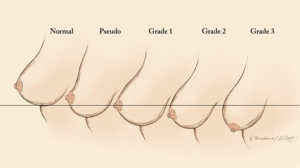
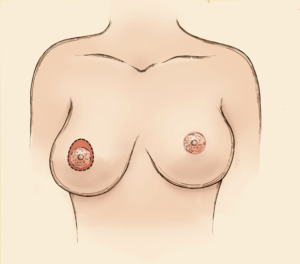
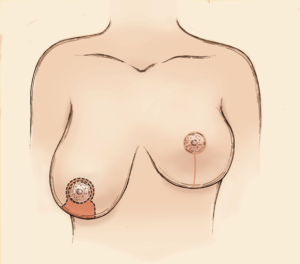
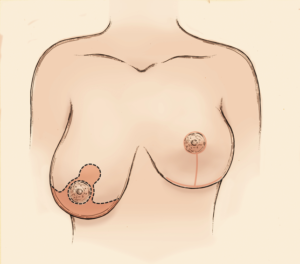
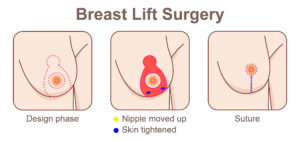
Procedure and post-op course
It is the job of the plastic surgeon to place the scars so that they stand out as little as possible. Our special technique almost always results in a thin and unobtrusive, barely identifiable scar lines which fade with time, assuming near skin colour. As a result, after a while they can only be observed if looked very closely (It depends a lot on your skin quality and colour).
Because the nipple needs to be moved, a number of small nerves that go towards it can be interrupted. The nipple sensitivity after a breast reduction or lifting can therefore be temporarily reduced compared to before the operation. Usually the sensitivity of nipple and areola returns to near normal after about 4 to 6 months.
This procedure is done under general anaesthesia and takes about 2-3 hours depending on the complexity. You will need a support bra (Sports bra types) to be worn for atleast 4 weeks after surgery. This reduces chances of swelling. Usually one can go home the next day and the next dressing is after a week. After about 3 days you can resume your normal activities and join work if you have a desk job. However, any strenuous activities or exercises must be avoided for 4 weeks atleast.
By one month after surgery, majority of patients say they feel “back to normal.” Bruising, discomfort, and most swelling disappear. By 6-8 weeks, you will be able to pursue all types of physical activities again. Of course, each person is different, so this timeline should be interpreted as a general guideline.
Monitoring visits are scheduled 6 weeks and 6 months after the procedure. Final result with recovery of sensitivity of the nipple and areola, takes about 6 to 12 months.
Few pre-requisites:
- A good physical health
- No major illnesses
- Being a smoker or an avid drinker increases the chances of developing complications.
- Have achieved your ideal weight.
Risk involved
Like every surgery, there are risks and potential complications of breast lift. Common risks involved in breast lift include, anaesthesia risks, bleeding, hematoma, a chance of infection, less sensation in nipple or breast, scarring, asymmetrical breasts, deep vein thrombosis and persistent pain.
However, if performed by a competent plastic surgeon, the complications are avoidable.
